The coronavirus pandemic has impacted the daily lives of everyone-from their work and school schedules to the way we obtain goods and services to how we recreate and interact with others. These changes directly relate to national and local mobility trends, especially since several Executive Orders in Michigan have either mandated or encouraged people to stay home and telecommute whenever possible.
The data we present here show the changes in mobility in Southeastern Michigan. These data were produced by Google, which is creating mobility reports for each State during this pandemic. The data presented below highlights the percent change in visits to places like grocery stores and parks in the seven counties that make up Southeastern Michigan. The list below is the percent change in mobility to these places between the first of April to mid-May for the State of Michigan. The maps below also reflect that timeframe and show the percent change in mobility trends at the county level for Southeastern Michigan compared to what baseline for mobility was to these places before the pandemic hit.
Shifts in Mobility Trends: Michigan
- Residential: +8%
- Workplaces: -28%
- Grocery and pharmacy: -6%
- Retail and recreation: -34%
- Parks: +180%
- Transit stations:-24%
Places of Residence
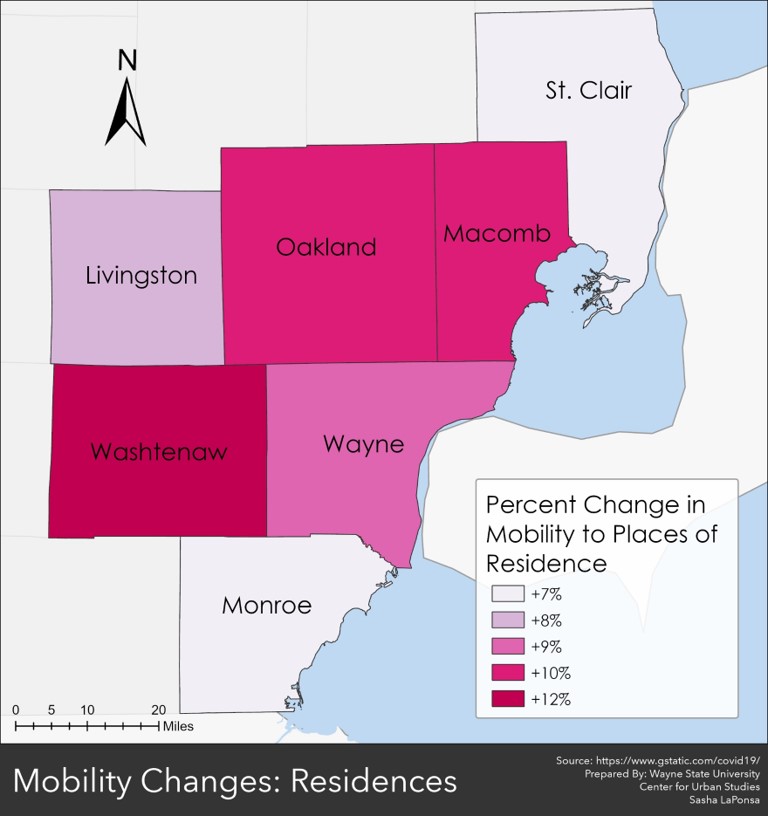
With the coronavirus pandemic came a statewide lockdown, which mandated people only leave their homes for necessities and not to visit with anyone outside of their homes, unless they were an essential worker. However, even with the mandate there was an increase in mobility between residences, statewide and locally. Statewide, there was an 8 percent increase in mobility to residential homes, and in Southeastern Michigan there was between a 7-12 percent increase, depending on the county. Washtenaw County had the highest percent increase in mobility between residences at 12 percent; St. Clair County had the lowest percent change at 7 percent. In Wayne County there was a 9 percent increase in mobility between residences, and in Macomb and Oakland counties there was a 10 percent increase.
Workplaces
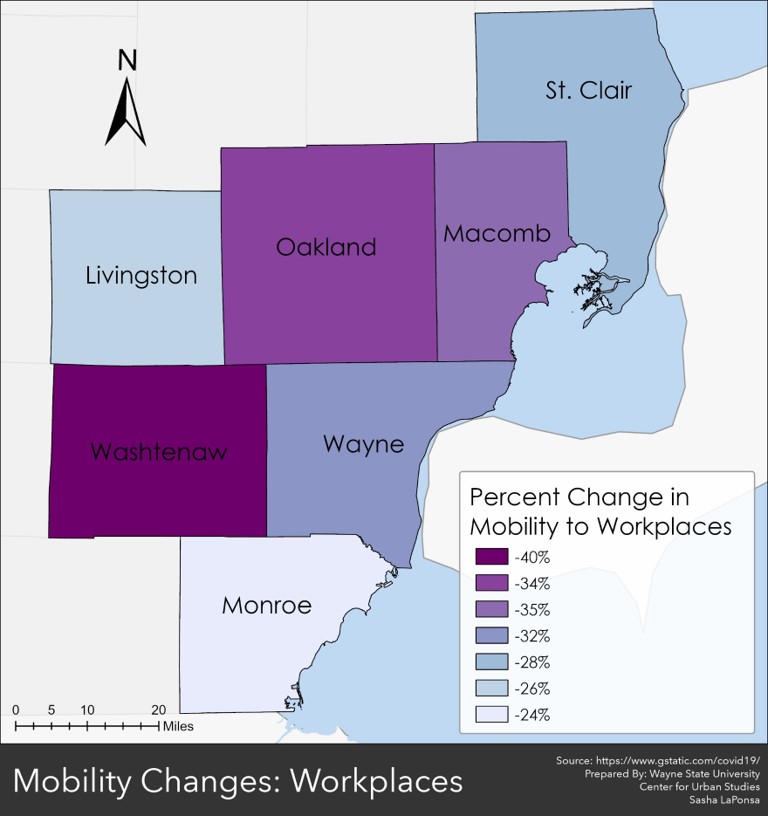
As noted, the Governor’s emergency orders throughout the pandemic have required certain places of business to close and for others to allow for telecommuting whenever possible. With such policy shifts came a decline in mobility to workplaces all throughout Michigan. At the State level there was a 28 percent decline from the normal amount of mobility to workplaces, and throughout Southeastern Michigan there was between a 24-40 percent decline in mobility to workplaces between the beginning of April and mid-May. Washtenaw County had the largest decline at 40 percent. In Wayne County there was a 32 percent decline in mobility to workplaces prior the coronavirus pandemic, in Oakland County there was a 36 percent decline, and in Macomb County there was a 35 percent decline. Monroe County had the smallest percent decline from the baseline at 24 percent.
Grocery Stores and Pharmacies
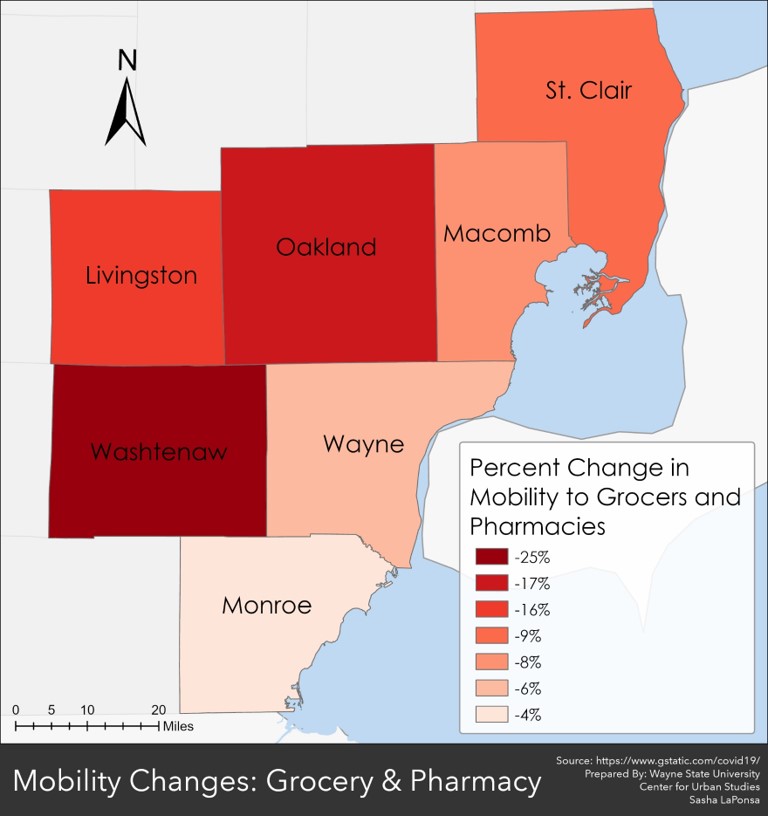
Between April and mid-May there was a decrease in mobility to grocery stores and pharmacies throughout Michigan, including in Southeastern Michigan. Washtenaw County experienced the largest decline at 25 percent while Monroe County’s shift was only 4 percent lower than the amount residents normally commute to these places. Although we witnessed bare shelves at the beginning of the pandemic, with certain product shortages continuing through today, the decline in mobility to these stores is not surprising as both consumers and businesses shifted to online and third party delivery services.
Retail and Recreation Locations
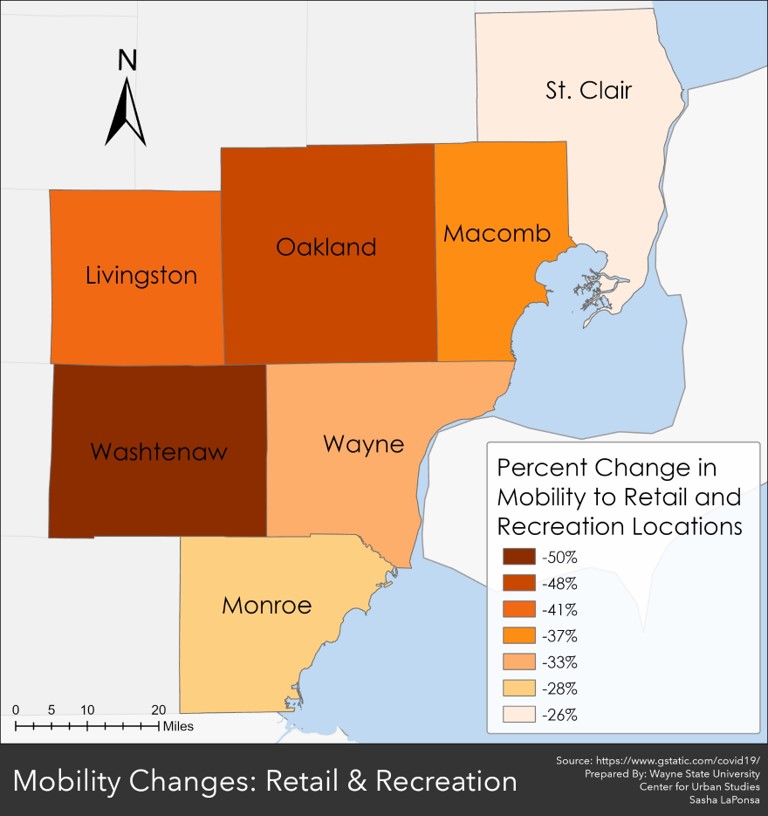
With the restrictions on business operations, including if they could even remain open to the public, it is also not surprising that at the State and local levels mobility trends have experienced a decline to retail and recreation locations. Washtenaw County again experienced the largest decline in mobility from the frequency residents were traveling before the pandemic to retail and recreation locations. According to the data, there was a 50 percent decline in commuting to retail and recreation locations for Washtenaw County. In Wayne County that decline was 33 percent, in Macomb County it was 37 percent, and in Oakland County it was 48 percent. At the State level there was a 34 percent decline from the baseline in the amount people traveled to retail and recreation locations.
Parks
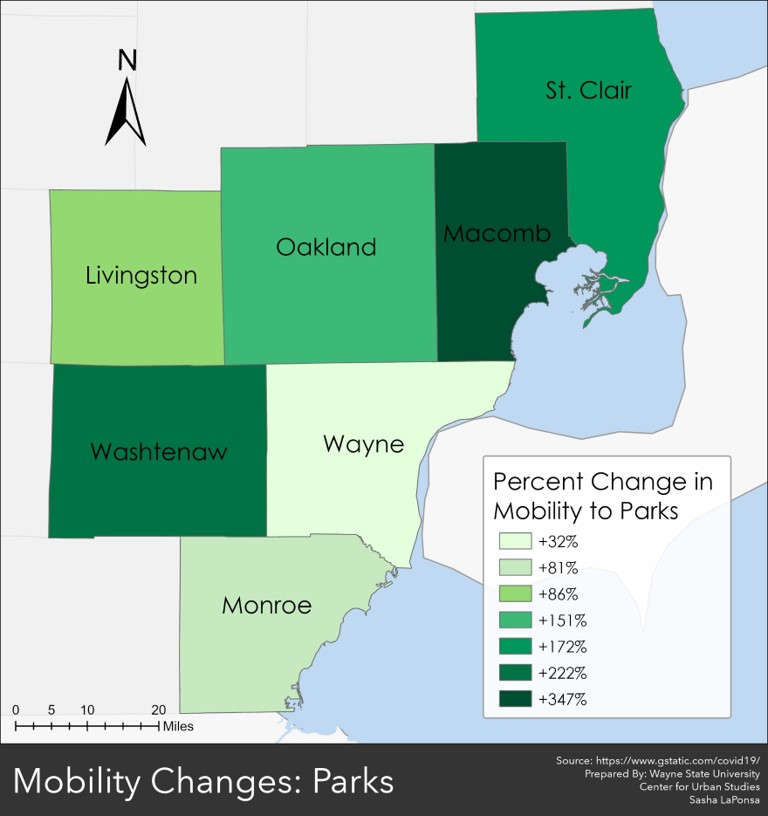
Similar to the trend being experienced at the State level, all counties in Southeastern Michigan have experienced an increase in mobility to parks. Wayne County experienced the smallest percent change at 32 percent while Macomb County experienced the largest percent change at 347 percent. There were three counties-Macomb, St. Clair and Washtenaw – where mobility to parks increased at a higher rate than the mobility rate increase at the State level (180 percent).
Transit Stations
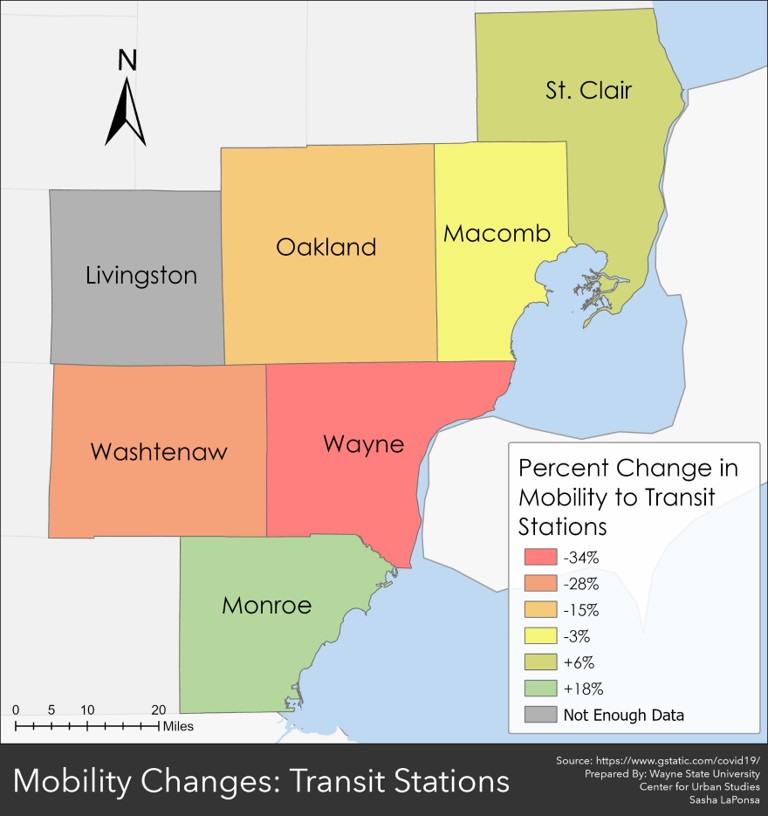
The data also shows that there was a decrease in mobility to transit stations throughout most of Southeastern Michigan, but not the entire region. In Monroe and St. Clair counties there was an 18 and 6 percent increase in mobility, respectively. In Wayne County, which provides public transportation via both the Detroit Department of Transportation and the Southeastern Michigan Authority of Regional Transit (SMART) mobility to these stations decreased by 34 percent. There are also communities in Oakland County and all of Macomb County that offers public transportation via SMART; mobility to these stations declined by 15 percent and 3 percent, respectively. In Washtenaw County, where there is also a local transportation system, mobility to these stations declined by 28 percent. There was a 24 percent decline in mobility to transportation stations at the State level.
Overall, this data provides a glimpse into how the coronavirus pandemic has shifted certain aspects of our everyday ways of life. These current shifts could lead to long-term policy changes as we as a state and a nation are seeing that telecommuting, road diets and contactless shopping, among other changes, are possible. Pros and cons can be argued for the long-term impacts of such changes, however, decreases in commuting does mean a decline in certain pollutants being emitted, which is environmentally beneficial and a shift we need to implement for the long-term viability of this planet.